Marketing to everyone is like throwing spaghetti at a wall and hoping it sticks. It’s much better to turn to customer segmentation to better understand your customers and tailor your marketing strategies accordingly.
By dividing your customer base into smaller groups based on shared characteristics, you can improve your customer service, create more targeted marketing campaigns, and uncover new product opportunities. As a result, your customers will be happier with your brand and feel your message resonates with them which could result in increased loyalty.
What Is Customer Segmentation?
Customer segmentation is the process of dividing customers into groups based on their needs, wants and behaviours. In other words, it's a way to identify different types of customers so you can target them with specific marketing messages.
Segmenting customers helps you to understand your audience better so you can offer better products and services that meet their unique needs. It also helps to improve sales by targeting the right people with your ads or promotions and prevents wasting money on marketing efforts that won't work for every customer group.
There are many ways to segment your customers: by age group (baby boomers versus millennials), location (urban vs rural), income level (high vs low), gender or even personality traits like extroversion versus introversion. We’ll get into that a bit later in the article.
Benefits of Customer Segmentation
Segmenting your customer base can be a competitive advantage if you do it correctly. If you can get a clearly-defined idea of your customers and their needs, then you can offer them a solution that works for them, and that has many benefits.
Better Understanding of Your Customers
By grouping customers based on characteristics such as demographics, behaviour patterns, and buying habits, you can gain insights into their needs and preferences. This will help you create more targeted marketing messages that resonate with them, ultimately leading to a better customer experience.
Just think about it for a moment, you aren’t going to sell the same item to both teenagers and pensioners in the same way. The product might be suitable for both groups, but the messaging and communication channels will be different. All of these factors will become evident during the segmentation process.
Improved Customer Acquisition and Retention
Segmenting your customers can also help you improve your customer acquisition and retention efforts. Identifying the characteristics of your target market allows you to create marketing campaigns that are more likely to resonate with potential customers. If customers see that your product is what they need to solve a problem, then you gain a customer which grows your business.
Similarly, customers who have supported your business for a long time want to know you still care about their unique needs. You can still sell the same products to them, but the messaging will be different and you could suggest other products based on their purchase history with your business.
More Efficient Use of Marketing Resources
Customer segmentation can also help you make more efficient use of your marketing resources, instead of wasting money on campaigns that don’t deliver results. With a thorough understanding of your target market, you can communicate with them in ways they like and target them with appealing promotions.
For example, you might create different email campaigns for customers who have purchased from specific product categories, or develop social media content that speaks directly to a certain demographic.
You will never be able to satisfy everyone with the same message or product, even if it is something they require. To succeed, you need to show them why your offering is the best. By customising your content to each segment, you can increase the relevance and effectiveness of your marketing efforts.
Increased Revenue
When you use targeted messaging for certain customer profiles, you increase the likelihood that they will make a purchase. This starts with understanding your customers and developing buyer personas. Once you implement the knowledge gained from segmentation efforts, you can appeal directly to those customers, and ultimately, increase sales.
Uncover Opportunities for New Products and Services
Finally, customer segmentation can help you uncover new opportunities for products or services that will appeal to your target customers. If you analyse the data for each segment, you may discover unmet needs or gaps in the market that your business is uniquely positioned to fill. This can help you expand your offerings and drive growth for your business.
Use your marketing resources more effectively by letting us deal with it for you!
Types of Customer Segmentation
There are many different ways to segment your customer base, each with its own advantages and disadvantages. Here are some of the most common types of customer segmentation:
Demographic Segmentation
Demographic segmentation involves dividing your customers into groups based on their age, gender, marital status, income, education, and other demographic factors. This type of segmentation is particularly useful for businesses that offer products or services that appeal to specific age groups or genders.
For example, a skincare brand might segment their customers by age, creating different product lines for young adults and seniors.
Geographic Segmentation
With geographic segmentation, you segment customers based on their location, such as country, city, town, or even neighbourhood. It is useful if your business operates in multiple regions and you want to tailor your marketing and product offerings to each location.
For example, a fast-food chain might offer different menu items in different regions based on local preferences. They could even expand their menu to have summer and winter options depending on the location of the restaurant.
Psychographic Segmentation
Psychographic segmentation involves dividing your customers based on their values, interests, personality, and attitudes. Using psychographic segmentation is advantageous when you want to create marketing messages that resonate with your customers on a deeper level.
For example, an clothing store might segment their customers based on their values and attitudes, which results in marketing campaigns that appeal to environmentally conscious consumers.
Technographic Segmentation
Technographic segmentation refers to splitting customers into groups based on their use of technology like mobile devices, computers, software, and apps. If your business offers products or services that require specific technologies, then technographic segmentation can be useful.
For example, a software company selling products for both Windows and Mac users may split their customers based on the operating systems they use to ensure they give them relevant information.
Behavioural Segmentation
With behavioural segmentation, you group customers based on their frequent actions or tendencies, such as product use or purchase habits. Behavioural segmentation works best when you want to target people that are most likely to buy a specific product or service.
For example, a grocery store could use purchase history as a segmentation tool to create personalised promotions and product recommendations for frequent buyers.
Needs-Based Segmentation
Since all customers have needs, you could opt for needs-based segmentation where you split customers into groups based on their specific product or service needs. This type of segmentation is useful for businesses that offer a wide range of products or services with the ability to tailor offerings to meet customer needs.
For example, a hotel might segment their customers based on travel needs with packages for business travellers, families with young children, and those who want all-inclusive holidays.
Overlapping Segments
It's important to note that segments can overlap, and customers can belong to multiple segments at once. For example, a customer might be both a frequent buyer and a VIP customer, or they might be interested in both environmentally sustainable products and products for seniors. In this case, you need to decide whether to group them into a specific segment, have them in both, or to create a new segment altogether.
How HubSpot can Help With Segmenting Customers
HubSpot is a popular customer relationship management (CRM) platform that offers a wide range of tools and features to help businesses manage your customer data and improve your marketing and sales efforts. One of the key benefits of HubSpot is its ability to help businesses segment their customer base in a variety of ways.
List Segmentation
HubSpot's list segmentation tool allows you to create lists of contacts based on a variety of criteria, such as their behaviour, location, or engagement level. Once you do this, you can target customers with suitable campaigns and capture all their data in HubSpot for future reference.
For example, you can create a list of customers that have recently purchased a particular product, or a list of customers who have not opened an email in the last 90 days. Now that you have this information, you can start developing a campaign that may appeal to the individuals on your list.
Active List Segmentation
HubSpot's active list segmentation tool takes list segmentation to the next level by letting you generate dynamic lists that automatically update based on changes in customer data.
For example, a business might create an active list of customers who have visited your website in the last 30 days, and then use that list to send targeted marketing messages to those customers. Once a customer responds to the campaign (like making a purchase), the active list will update their details so you can take the next step.
Custom Properties
HubSpot's custom properties feature lets you generate custom fields in your CRM to track customer data that is specific to your business. It makes it much easier to understand customers’ needs which in turn allows for better campaigns and targeted messaging.
For example, you could create a custom property based on product categories or products to track what customers prefer.
Event-Based Segmentation
Another useful HubSpot feature is event-based segmentation that allows you to create lists of contacts based on specific events or actions, such as attending a webinar, registering for an event, or downloading a piece of content.
For example, a business might create a list of contacts who have registered for a webinar on a particular topic. They could then use that list to send follow-up emails with additional resources or to promote related products or services.
HubSpot's event-based segmentation features also lets you track and analyse customer behaviour across a variety of channels, including email, social media, and website activity. This can provide valuable insights into customer preferences and interests, allowing you to create more effective marketing campaigns and improve your overall customer experience.
Benefits of Customer Segmentation in HubSpot
Some of the benefits you will get from using HubSpot for customer segmentation are:
More Effective Marketing Campaigns
With the help of HubSpot’s lists, you can develop personalised marketing messages that cater to the distinct needs and interests of each customer segment which may result in increased engagement rates and more conversions.
Improved Sales Efforts
By tracking custom properties in HubSpot, you can gain valuable insights into the needs and preferences of each customer segment, allowing you to create more effective sales pitches and close more deals.
Better Customer Service
It’s easier to anticipate customer needs and offer personalised service when you do customer segmentation with HubSpot. For example, you could see that a certain customer always buys a specific product in the middle of every month. You can then target them with a replenishment email or suggest a complementary product they may be interested in adding to their next purchase which increases average order value.
Want expert guidance on setting up and managing HubSpot continuously?
Let our team help you! With fast, effective onboarding and monthly management, we’ll take care of HubSpot while you use your time to grow your business.
Using LinkedIn for Customer Segmentation
LinkedIn is a powerful tool for customer segmentation, as it provides a wealth of information about users' professional backgrounds, job titles, and industries. With these details, you can develop highly targeted marketing campaigns that resonate with your ideal customers. It can be especially useful if you are in the B2B market.
Ideal Customer Profiles
One of the key benefits of using LinkedIn for customer segmentation is that you have access to detailed ideal customer profiles. An ideal customer profile (ICP) is a description of the type of customer that your business is trying to attract, including information such as job title, industry, company size, and more.
LinkedIn provides a wealth of information about users' professional backgrounds which users provide themselves. As long as a user updates their information, you are ensured quality, relevant data that can be used to get a better picture of their wants and needs.
For example, a B2B software company might create an ICP that includes information such as:
- Job title: Director of IT
- Industry: Healthcare
- Company size: 500-1000 employees
- Pain points: Managing a large number of patient records
By using LinkedIn to gather this information, you can find people who fit this segment and create campaigns that speak directly to the needs and pain points of this group. Your research could reveal that you need to adjust your offering slightly to meet these needs.
Buying Roles
Another key benefit of using LinkedIn for customer segmentation is that it allows you to identify the buying roles within a target organisation. Every person in an organisation has a different role and responsibilities so if you target the right person, you improve the likelihood of a successful sale.
For example, your business could sell accounting software. You also know that in large organisations, it’s usually the chief accounting officer that makes the decision about which product to use, so you can target the right person in this way. Alternatively, you may know that it’s the accountant in businesses with fewer than 5 employees that makes the final buying decision, so you find relevant people that way.
LinkedIn Sales Navigator
LinkedIn Sales Navigator is a premium subscription service that provides advanced search and lead generation capabilities. With Sales Navigator, you can identify and target specific decision-makers within a target organisation, improving your chances of making a sale.
Conclusion
Customer segmentation is a powerful tool to understand your customers and to tailor your marketing strategies accordingly. By breaking down your customer base into smaller groups, you can improve customer service, create more targeted marketing campaigns, and uncover new product opportunities.
With the help of tools like HubSpot and LinkedIn, you can effectively target and engage with your ideal customers, which drives growth and success in today's competitive market.
More importantly, taking the time to understand your customers' needs and preferences gives you an opportunity to create marketing strategies that truly resonate with customers resulting in long-lasting relationships and driving sustainable growth.
Not sure where to start with customer segmentation?
We can help you do it with HubSpot.




